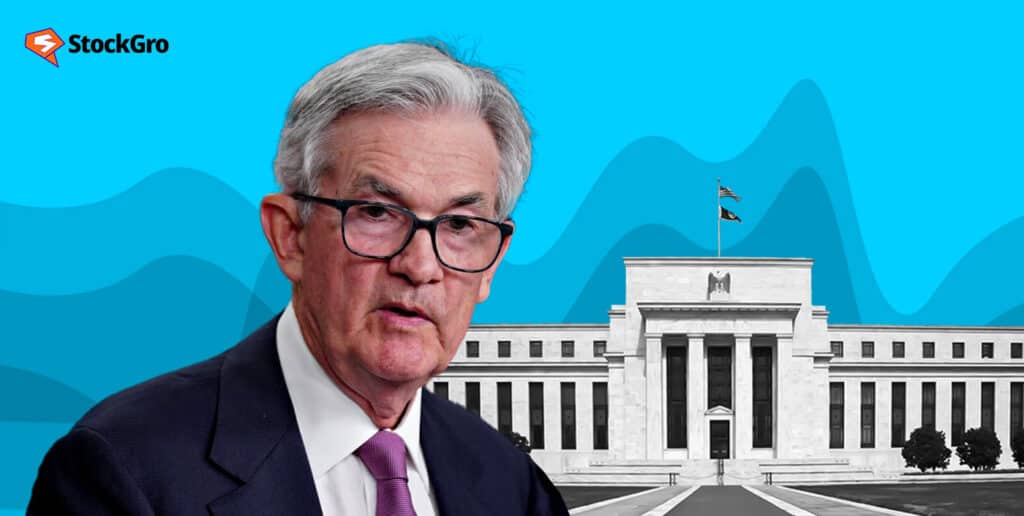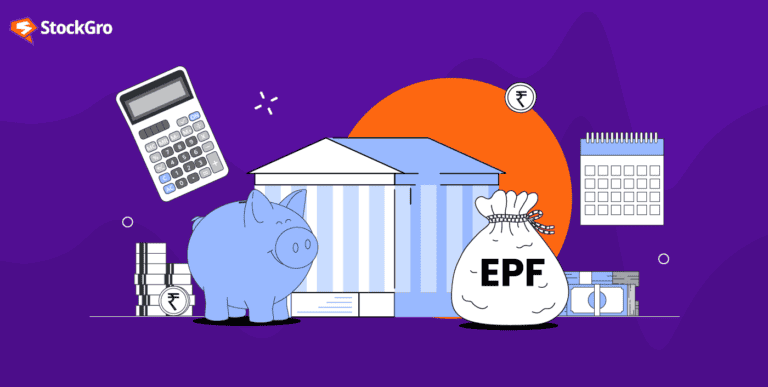
US Federal Reserve has cranked up its benchmark lending rate, pushing it to the highest level since 2001! After the pause in last month’s FOMC meeting.
The recent decision by the US Federal Reserve to raise its interest rate hikes has sparked fluctuations in global markets and implications for the Indian economy. Understanding the impact of these decisions is crucial for investors and market participants. Let’s delve into the details and explore the consequences.
The impact on global markets
The rate pause was expected to boost global markets. However, the Fed hinted at future rate hikes to tackle inflation. This uncertainty caused fluctuations in US stocks and making its presence felt even on the vibrant streets of Dalal Street.
The US Fed’s decision has led to volatility in the stock markets, with initial declines followed by a rebound. Sectoral indices like Nifty Bank and Nifty Financial Services were negatively affected, while Nifty IT, FMCG, and Pharma offered support.
The Fed’s cautious stance
So, why did the Fed decide to hit the pause button? The latest May Consumer Price Index (CPI) data might hold some answers. The figures revealed a slight decline in the CPI, indicating that inflation might be nearing its peak. This prompted the Fed to adopt a more cautious approach to raising interest rates.
Fed Chair Jerome Powell shed some light on the decision during a press conference. He mentioned that the Fed’s policy tightening effects were felt in interest rate-sensitive sectors like housing and investment.
Powell emphasised that the committee had considered the potential headwinds from the recent regional banking crisis, making the decision to pause a prudent move.
He emphasised the importance of having credible evidence that inflation is peaking and starting to decline before concluding that the economy has been squeezed sufficiently. Core inflation has been a tough nut to crack in recent months, and the Fed wants to see more progress in taming it.
You may also like: RBI MPC meeting: Repo rate unchanged, what does it mean for you?
Inflation projections: A slow retreat
According to the projections unveiled on Wednesday, officials anticipate a slower decline in “core” inflation, measured by the personal CPI index. They expect it to drop to 3.9% this year, gradually easing to 2.6% in 2024 and 2.2% in 2025. These projections indicate a slower decline compared to the March estimates, signalling that inflation remains a lingering concern.
Economic growth: Higher expectations
Officials have also revised their estimates for economic growth this year, forecasting a 1% expansion. This figure is significantly higher than the 0.4% estimate from March. The unemployment rate is projected to peak at 4.5% in 2024, slightly below the earlier forecast of 4.6%.
Rate hike outlook: Stepping up the tightening
The target range for the Fed’s benchmark rate now stands at 5-5.25%. The new projections reveal that the median participant of the Federal Open Market Committee (FOMC) expects an additional half-percentage point increase in rates this year.
Inflation has been fueled by factors stemming from the COVID-19 pandemic, including disrupted supply chains, strong demand for high-priced goods over services, and substantial fiscal and monetary stimulus.
The mismatch between labour supply and demand has also contributed to rising wages and prices, prompting the Fed’s efforts to correct the situation through policy tightening.
Also Read: A closer look at India’s latest Q4 GDP data: Key takeaways
The Indian stock market
Whenever the US Federal Reserve announces its domestic macroeconomic data and interest rates, the Indian stock market experiences a roller coaster ride. Market participants closely analyse the proceedings, and even minor changes in US rates can lead to significant swings in the Indian market.
Why do US Fed rates impact the Indian stock market?
To understand the impact, let’s consider why foreign investors invest in India instead of the US. Unlike the US, India is a developing economy with immense growth potential. Additionally, interest rates in India are higher compared to the US.
Foreign investors borrow heavily in the US at lower interest rates and invest that capital in the Indian market to benefit from higher interest rates. This reduces their borrowing costs significantly compared to borrowing in the Indian financial markets.
Let’s Crunch Some Numbers:
Imagine Lisa, a foreign investor, borrows $150,000 at a borrowing cost of 2.5% in the US. She then invests this amount in the Indian stock market and earns a 12% annual return. If Lisa borrowed the same capital from the Indian financial markets, he would have paid borrowing costs of 9-10% (or even higher with private lenders).
By borrowing where interest rates are lower and investing where rates are higher, Lisa maximises her profit spread. This strategy attracts many foreign investors to India.
A glimpse into Indian markets
Following the Covid-19 pandemic, the Federal Reserve drastically reduced interest rates to near-zero levels, resulting in foreign portfolio investors purchasing a record $37 billion worth of Indian stocks in 2020-21.
However, this buying spree has slowed down, and venture capitalists have also reduced their investments in startups. As a consequence, many startups have faced layoffs. Only interest rate cuts in the US could potentially reverse this situation.
Over in India, foreign investors showed great interest in the market. FPIs poured in a whopping Rs 43,838 crore in May, the highest in nine months. The RBI keeping its repo rate steady, and the US Federal Reserve halting rate hikes are set to generate market elation through foreign investments in Indian equities.
Foreign institutional investors (FIIs) displayed robust buying activity in the Indian cash market, acquiring approximately Rs 1,678 crore worth of Indian assets. Meanwhile, domestic institutional investors (DIIs) turned net sellers, resulting in an outflow of over Rs 203 crore.
Also Read: Over $3 billion in the month of May! FII dollars pouring non-stop on Dalal Street
Impact on India’s economy
The Fed’s decision to pause indicates their comfort with current rate levels. As a result, Indian assets become more appealing to investors due to their higher yields compared to US assets. This can drive foreign investment, boost the Rupee, and positively impact the stock market.
The US Fed’s interest rate adjustments create ripples in global liquidity, which, in turn, affects stock prices across the world. Liquidity and earnings play a major role in determining stock prices in the short and long terms.
Luckily, the Indian market has been performing well, with positive economic indicators. The Fed’s rate pause could make India the ultimate dance floor for portfolio investments.
Potential challenge
While a lower Rupee can affect exports and imports, potentially impacting India’s trade balance, a weaker US dollar can lead to higher commodity prices. As a significant importer of commodities like oil, India may face potential challenges.
Speculations and monetary policies
There are speculations that the Fed may announce a rate hike in the upcoming July meeting. However, it’s unlikely that the US central bank will start cutting rates before 2024, given the strong labour markets and persistent inflation.
Meanwhile, the RBI has decided to keep rates unchanged at 6.5% in its recent monetary policy committee meeting. The RBI has been raising rates since last year to tackle inflation.
The enigmatic interplay between the US Federal Reserve’s interest rates and the Indian market continues to shape the financial landscape, with twists and turns that can significantly impact investors and economies.

